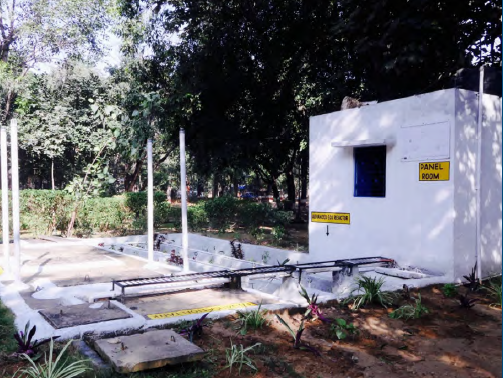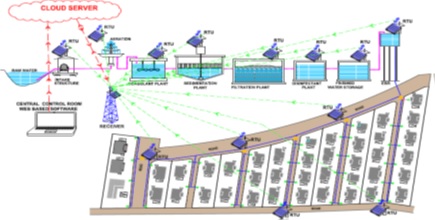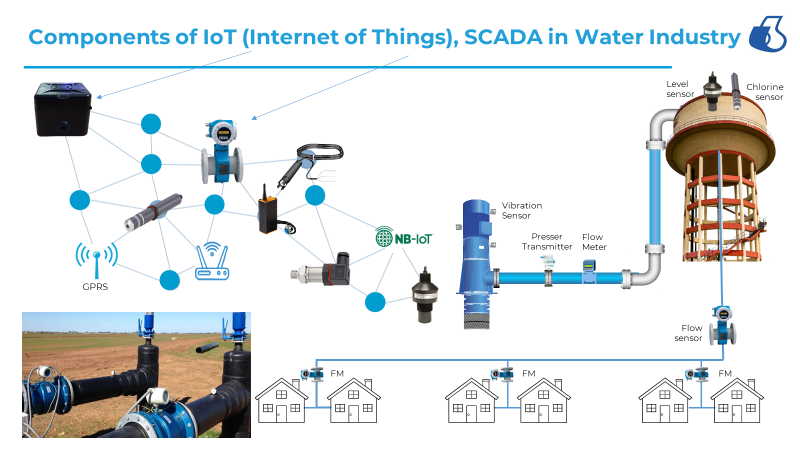By Aditi Agarwal
There is increasing scientific evidence to prove that treatment systems with designs inspired by nature are highly efficient treatment technologies.
India generates about 7,200 crore liters of sewage every single day. Out of this only 2,000 crore liters is treated, rest is discharged directly either into the ground water or fresh water resources. This practice has led to most of our ponds, lakes and rivers being severely polluted. Even the sewage that
Does get treated does not get completely recycled and is often discharged into water bodies where it mixes with untreated waste water. This viscous cycle is the root cause for the increasing water crisis in the country. Centralized treatment systems face tremendous challenges as laying and
Maintaining a huge grid of pipelines is an expensive and cumber some proposition. Also, pumping wastewater from different parts of the city to a centralized location involves huge energy costs and also adds exponentially to the carbon footprint of the wastewater treatment plant. In a developing country like India, connecting all parts of the city to a centralized WWTPs is next to impossible. This creates a huge gap between demand and supply with only 30% of India’s sewage being treated currently, as per the Central Pollution Control Board (CPCB) reports.
Thinking out of the box
With policy changes and increasing push by the Government towards decentralized sewage treatment plants, on-site treatment reuse of water is gaining momentum in our country. However, centralized systems have been blindly miniaturized in the context of decentralized infrastructure.
Unfortunately, most decentralized projects carry out only the capital cost analysis during selection of the technology. A thorough life cycle cost assessment of different technologies is not carried out which leads to eventual abandonment of assets after installation, as the operation and maintenance of STPs becomes difficult for communities, municipalities and institutions. The current landscape is
filled with power and labour intensive mechanical technologies that face numerous challenges, especially in the Indian context, like lack of constant power supply, lack of skilled manpower, heavy sludge disposal costs, low social acceptance, high energy usage, high O&M costs to name a few.
How to make a sustainable
Decentralized waste treatment system we need to rethink our strategy about choosing decentralized waste treatment systems. The criteria for choosing appropriate technologies should be
Based on the following criterion to ensure sustainability The STP should function optimally at variable hydraulic and organic loads. The STP should be able to function even if power supply is erratic. The STP should have a low carbon footprint. It should consume low power. There should be powered by diesel genet backups. Reduced Aerosols. Reduced Sludge disposal to landfills. Local manpower and maintenance support. Low O & M or LCC costs. The STP needs to produce high quality water that can be recycled.
Change in perspective required
In the last 100 years or so human development and growth has been very linear, but nature doesn’t work like that. Nature is cyclic. There is a start, growth, maturity and then dying and then there is
A reboot. That is the default design of nature around us. By-products are always the starting point for new life. That is the essence of a circular economy or closed loop recycling. If we look at water and the water cycle, we know water is a finite source but nature has been carrying out the water cycle process so well for billions of years and has created this illusion of infinity, about water. Every time it rains we feel we have got new water. But the reality is that there is no more water on earth today than there was 4 billion years ago. So fundamentally nature has been recycling water for billions of years and what we are drinking today could have been used by dinosaurs, at one point in time. What we need to do is to replicate nature and recycle our water over and over again. Nature doesn’t generate waste; we humans call it waste. And what happens when you call something waste then you just have the attitude to get rid of it or make it invisible. But if you don’t consider it a waste and call it a resource you start seeing the value.
Need to lean on nature
There is increasing scientific evidence to prove that treatment systems with designs inspired by nature are highly efficient treatment technologies. The cost – effective design and implementation of ecosystems in wastewater treatment is something that exist and has the potential to be further
Promoted globally as a sustainable and practical solution. When we learn from nature to re-imagine, re-think, and redesign the future of our world. And focus on the intersection of nature, biomimicry,
Circularity, and ecological design thinking, we go beyond sustainable towards regenerative solutions. Nature based solutions use plants, earthworms, soil, bacteria, and other natural elements and processes to remove pollutants from wastewater. This reduces chemical use and saves energy. These approaches can treat wastewater in a sustainable, low-cost, low-impact manner, and can be designed to have along performance life. There is a well-established evidence in practice, that demonstrates the effectiveness and efficiency of nature based solutions. For example, ‘Vermifiltration’. What is important to emphasise when considering such systems is not only the ability to deliver the primary function of treating wastewater, but also possible benefits that can generate greater overall societal advantages. The benefits include improvement of water quality, as well as benefits beyond this for people and nature, such as increasing biodiversity, providing social co-benefits, such as recreational areas and wellbeing through green spaces, reducing carbon footprints and enabling water reuse.
What is Vermifiltration?
It is nature’s most powerful wastewater treatment system. Eisenman Fetid (Red worms) is an earthworm species long known for its capability to digest organic matter. These worms thrive in moist soil with abundant organic matter like faecal waste and have an inherent capability of consuming pathogens. Worm ecosystem operates on self-regulating basis. Population increases or
Decreases based on resources available making it a sustainable system. The earthworm’s body acts as a ‘filter’ and reduces pollution load in the effluent stream. These worms break down solids
Trapped in the vermin filter and excrete smaller particles and a consortium of microbes. These microbes form a biofilm on the attached growth surface. As they burrow, the worms create channels that provides passive aeration throughout the system, making the system naturally aerobic. As water trickles down the various layers of the vermin filter, it gets filtered and biologically treated in the natural ecosystem. In the last two decades there has been extensive research both in the lab and on the field regarding vermin filtration which is in line with the changing landscape with regards combating climate change. Earthworms change the properties of biofilm present in the active layer Through their burrowing activity and ingestion. They also help in degradation of organic matter by symbiotic and synergistic interactions with the indigenous microbes. It has been successfully applied for the treatment of municipal and industrial sewage. Taking





